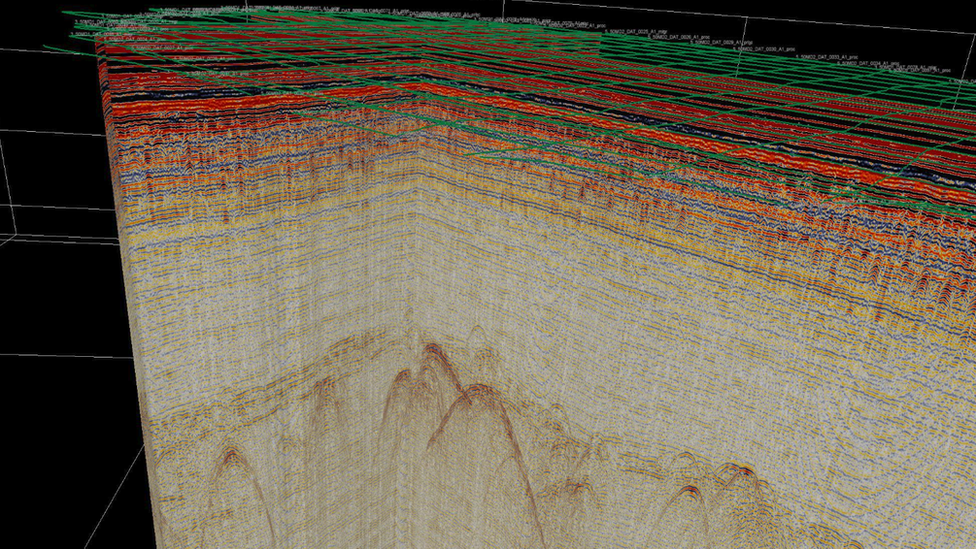Secret Cold War base shifts through Greenland ice
- Published

Radar images show the tunnel infrastructure
An abandoned US military base buried deep under the Greenland ice has drifted hundreds of metres towards the edge of the ice cap since it was built at the height of the Cold War, a report shows.
"Camp Century is still 100 km (62 miles) from the edge, so it will take many, many years before it reaches a critical point, external," Danish scientist Nanna Karlsson told the Greenland newspaper Sermitsiaq.
The base, powered by the world's first mobile nuclear reactor, was officially a research station, but its real aim was to launch nuclear missiles against the Soviet Union in the event of war.
The missiles were to be stored in a network of tunnels, but engineering problems and objections by Denmark, which ran Greenland at the time, about the real nature of the base prompted the US military to shut it down in 1966, confident that it would gradually be buried under the ice cap, external.
But, as Denmark's TV2 channel reports, "climate change has cast doubt on that theory, external", because Greenland's ice is melting much faster than the historical average.
Heading west
Ruth Mottram of the Danish Meteorological Institute says the Greenland ice sheet looks likely to have shrunk more in the last month than the average for a whole year, external since 2002, according to provisional satellite data.
The Danish and Greenland governments set up a climate monitoring programme in 2017 to track the remains of Camp Century, and the latest report by Dr Karlsson and her colleagues at the Geological Survey of Denmark and Greenland (GEUS) uses radar data to detail how far the base has moved, external since 1959.
The scientists criss-crossed the ice cap on skis, external two years ago, dragging radar devices behind them, and Dr Karlsson says the data shows the raised conical shapes on the tunnel roofs at a depth of 50 metres - and 232 metres (253 yards) further west by southwest than their original location.
You may also be interested in:
The expedition also found that the base and its estimated 9,200 tonnes of scrap and environmentally-hazardous oil and diesel waste, not to mention radioactive residue from the nuclear reactor, are sinking deeper down into the melting ice.
The scientists at GEUS say that this downward momentum "may have an impact on the time it takes for the base eventually to emerge from the ice", TV2 reports.
'New form of dispute'
And the question remains as to who will clean up the waste, given that the base was built under a US-Danish agreement without the people of Greenland having any say at the time.
The agreement "allowed Camp Century to sink into the ice with everything it contained, including pollutants, external", Greenland's Finance Minister Vittus Qujaukitsoq complained on the Danish news site Altinget last year, indicating that the government of the island expects Denmark and the US to be ready to play their part when the base eventually emerges into the daylight.
Climate and glacier scientist William Colgan says uncertainty about who is responsible for the the disposal of Cold War relics could create "an entirely new form of political dispute resulting from climate change, external".

The nuclear reactor was dismantled before Camp Century shut down
Next story: Moscow issues graffiti regulations
Use #NewsfromElsewhere to stay up-to-date with our reports via Twitter, external.